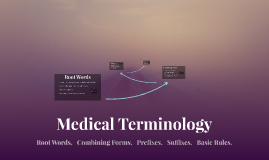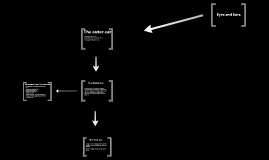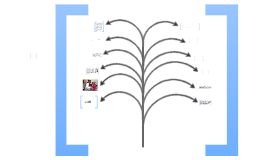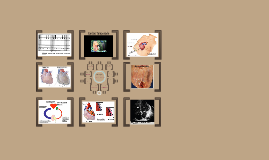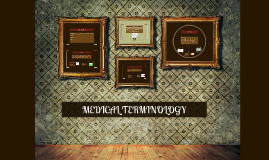Medical Terminology
Transcript: Side Effects: seizure rigid muscles, high fever, uneven heartbeats, tremors restlessness blurred vision, eye pain, seeing halos chest tightness, trouble breathing, SOB easy bruising dry mouth (most common) decreased sex drive Claim: When taken at 7 AM, Vyvanse provided improved attention at 2 hours after taking and was effective throughout the day, even at 14 hours after taking Sam-E Claim: Strattera is a non-stimulant that helps manage ADHD symptoms. Side Effects: chest pain SOB Dizziness unusual thoughts hallucinations stomach pain Side Effects: insomnia irritability mania impulsivity !!!addictive!! Intuitive (guanfacine) Prozac (fluoxetine hydrochloride) Panax Ginseng Green Oats Side Effects: loss of appetite, skin rash, sweating, ringing in the ears, shakiness, stomach pain, agitation, anxiety, muscle pain, fast heartbeat, and more frequent urination Aromatherapy Hypericum perforatum, an herbal medicine, works better than a placebo in helping out with sadness, anxiety and insomnia. Side effects may include fatigue, indigestion and dry mouth. Folate is a vitamin B, that people with depression usually lack in. Folic Acid could be found in leafy greens and vegetables. Taking Folic Acid has little to NO side effects. Pristiq (Desvenlafaxine) Passion Flower By Alicia Holden Caffeine is found to be an effective stimulant for ADHD as opposed to prescriptions like Ritalin. Cons to Caffeine is withdrawls and weight changes I will list 10 man-made medicines starting from the worst possible outcome to the least possible outcome. I will state their side effects, show you their chemical formation and a few statements about the medication itself. My theme for these ten medications are Depression and ADHD Natural Supplements Claim: It may give you what you need to help manage your child's ADHD symptoms Wellbutrin is an anti-depressent. It contains another medication called Zyban which helps smoking cessations. Wellbutrin can be prescribed as an extended release or an Instant release. Never exceeding 300mg a day. Wellbutrin is also know for low sexual side effects. Lexapro is an SSRI, and can be also thought of as the ONLY SSRI, that is the most effective. Lexapro is also the medicine that has less intense side effects than the rest. fast, pounding, or uneven heartbeats; decreased blood pressure (feeling light-headed, fainting); dangerously high blood pressure (severe headache, blurred vision, buzzing in your ears, anxiety, confusion, chest pain, shortness of breath,... Celexa (citolapram hydrobromide) Strattera (atomoxetine Hcl) Warning!!: Paxil in a new form of birth defect. St. Johns Wort Omega 3 Fatty Acids 10 Pharmaceutical Medications Claims: Patients treated with WELLBUTRIN were significantly less likely to experience a loss in sexual desire than patients taking ZOLOFT®* (sertraline)6,7 Vyvanse is part of a controlled treatment to ADHD. It is a Stimulant. It helps the patient to focus more, controll their actions, and to lessen the hyperactivicty. Vyvanse works by changing the amounts of a few natrual substances in the brain. Desvenlafaxine is an extended release anti-depressant/anxiety tablet. Pristiq is a part of a group called SNRIs (selective seotonin and norephinephrine reuptake inhibitors. Vyvanse (lisdexamfetamine dimesylate) also short for S-adenosyl-L-methionine, is a natural chemical in the human body that increases the levels of neurotransmitters, seratonin and dopamine. Of course helping out depression. Only cons are constipation and nausea. Panax Ginseng can stablize body function, reduce stress and raise levels of motivation and confidence helping out people with Depression AND ADHD. Only cons is the usual constipation. Wellbutrin (Buprorion Hcl) Side Effects: Centella Asiatica Paxil (paroxetine hydrochloride) Claim: Celexa effectively raises the serotonin levels in your brain by letting your synapses soak in serotonin for longer than usual by slowing (inhibiting) the mechanism of serotonin transmission deeper into the neurons (reuptake) Folic Acid Lexapro (escitalopram oxalate) Celexa is also an SSRI for depression. Celexa could also be prescribed to people with OCD, anxiety and PTSD. Celexa is a good med to switch to if the SSRI you’re already taking stops working Medical Terminology Project Wednesday Class Side Effects: drowsiness weight changes insomnia nausea Side Effects: nervousness dizziness sleep problems weight changes decreased sex drive constipation Passion Flower helps with insomnia and mainly anxiety, helping to reduce the stress and tension for those who suffer ADHD. It improves job performance and has less intense side effects. Cons are rapid heartbeat and constipation. Diet Paxil, being an SSRI, treats depression, OCD, PTSD, and PMDD. Prozac is second to last on having least amount of side effects. Massage oils and infusers are known for meditation and relaxation. It sooths the nerves and undo the tension that is in your body. A great treatment for ADHD/Anxiety with no side






